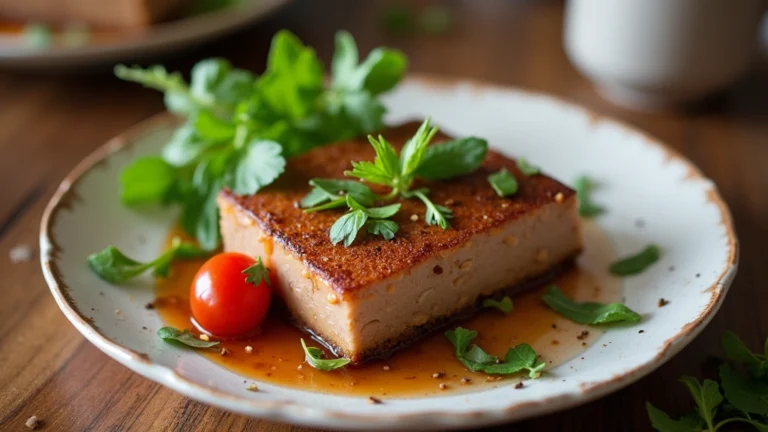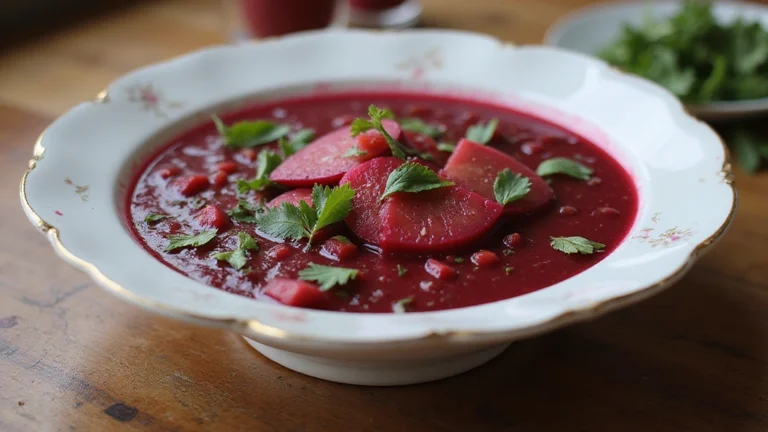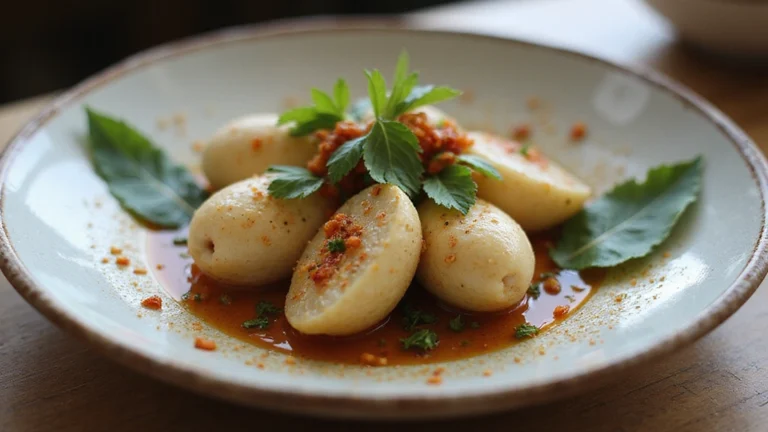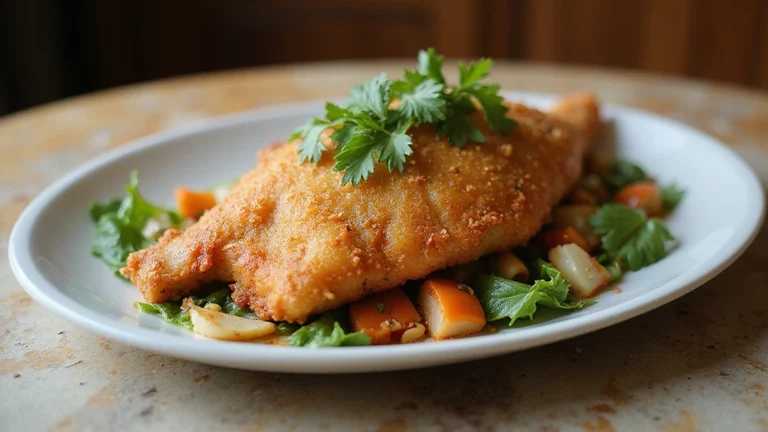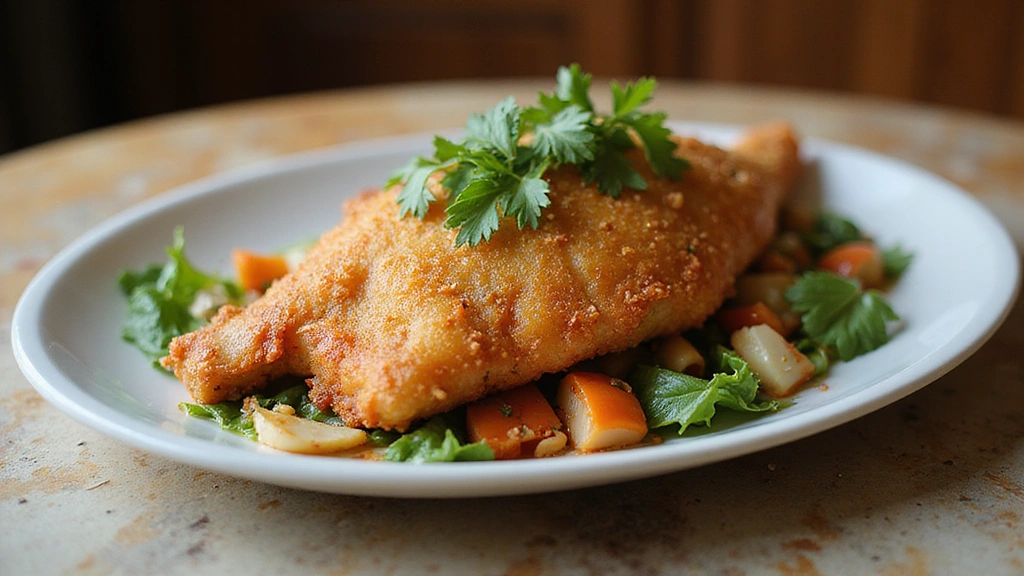
Crispy Vietnamese Fried Fish is a delightful dish that combines crunchy textures with vibrant flavors.
The marriage of fresh herbs, tangy dipping sauces, and perfectly fried fish creates a culinary experience that is both satisfying and refreshing.
I first tasted this dish at a bustling street market in Ho Chi Minh City, where the aroma of sizzling fish filled the air and beckoned food lovers from all around.
Whether enjoyed as a main course or as part of a shared meal, this recipe promises to impress family and friends with its simplicity and bold flavors.
The History and Cultural Significance
• Crispy Vietnamese Fried Fish traces its origins to coastal regions of Vietnam, where fresh catch was a staple of local diets.
• The dish evolved over decades as cooking techniques were refined, and various regional ingredients were incorporated, eventually becoming the beloved version we know today.
• In Vietnamese culture, this dish traditionally appears at family gatherings and festive occasions, symbolizing prosperity and abundance.
• While many variations exist across different regions, the authentic version maintains the use of fresh fish and a crispy batter that sets it apart from imitations.
Recipe Overview
Nutritional Information (per serving)
Ingredients
Essential Equipment Guide
Deep Fryer: This tool is essential for achieving the perfect crispiness in the fish. While a heavy-bottomed pot can work as an alternative, a deep fryer offers precise temperature control, ensuring even cooking and preventing oil from absorbing into the fish.
Fish Spatula: A fish spatula is specifically designed for flipping delicate fish without breaking it apart. If you don’t have one, a wide slotted spatula can suffice, but look for one that is thin and flexible to maneuver easily under the fish.
Meat Thermometer: This tool helps ensure that your fish is cooked to the perfect internal temperature without overcooking. An instant-read thermometer is best, allowing you to check the fish quickly and accurately.
Preparation Methods
Preparing the Batter: To achieve a light and crispy texture, it’s essential to mix the rice flour with water just before frying. This prevents the batter from becoming too thick or gummy. Aim for a consistency similar to pancake batter, allowing it to coat the fish evenly without dripping excessively.
Frying Technique: When frying, the oil should be hot enough (around 350°F) to create a sizzle when the fish hits the pan. This ensures a crispy exterior while keeping the fish moist inside. Avoid overcrowding the pan, as this can lower the oil temperature and result in soggy fish.
Making the Dipping Sauce: Combine all ingredients for the sauce in a bowl, adjusting the lime juice and sugar to taste. This sauce should be balanced between savory, sweet, and sour, enhancing the fish’s flavors without overpowering them. Allow it to sit for a few minutes to let the flavors meld.
Step 1: Prepare Ingredients
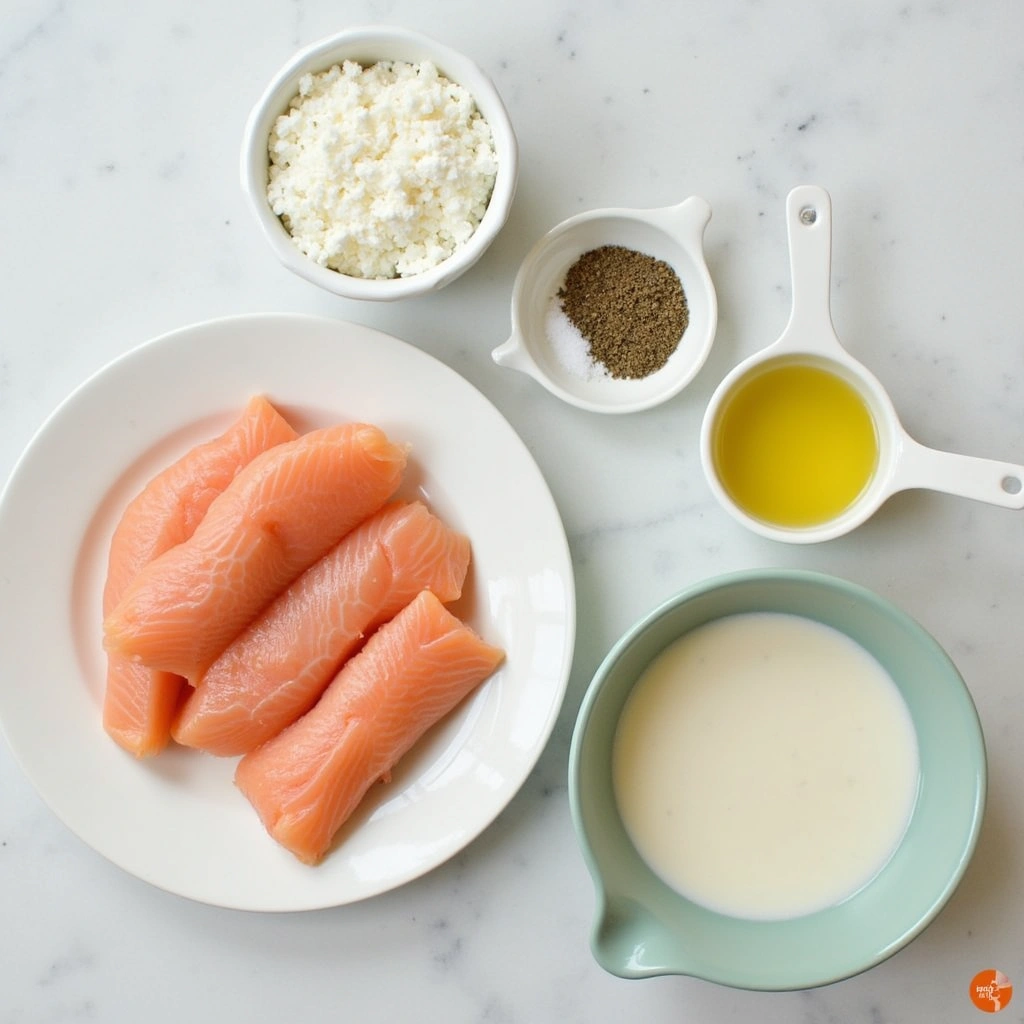
Begin by gathering all your ingredients to ensure a smooth cooking process.
Wash and pat dry the fish fillets, then season them with salt and pepper.
Set up your frying station with oil, batter, and a plate for the finished fish.
Having everything at hand will help you work quickly and efficiently.
Step 2: Make the Batter
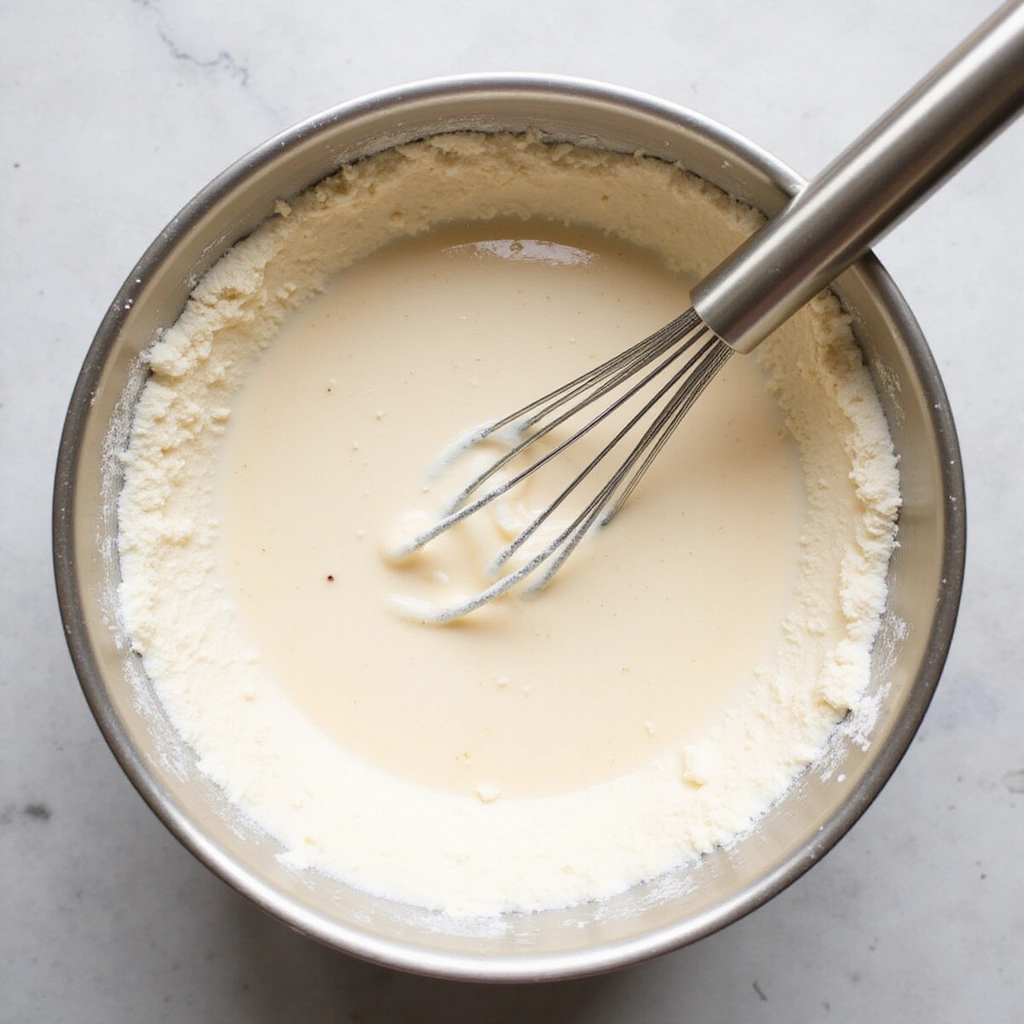
In a mixing bowl, combine rice flour, salt, and black pepper.
Gradually add water while whisking until you achieve a smooth batter.
The batter should be thick enough to coat the back of a spoon without dripping off too quickly.
Let the batter rest for about 10 minutes to allow the flour to hydrate.
Step 3: Heat the Oil
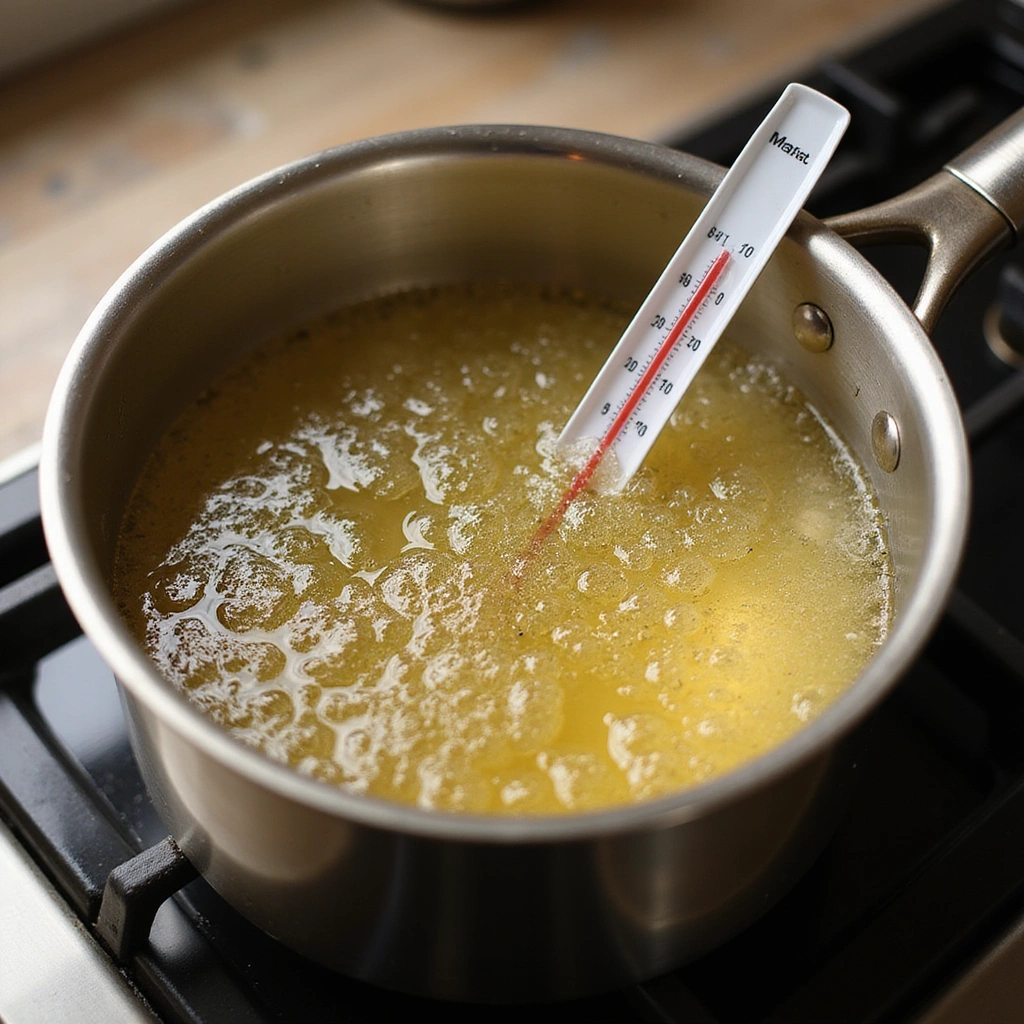
In a deep fryer or heavy-bottomed pot, heat oil over medium-high heat.
Use a thermometer to ensure the oil reaches 350°F before frying.
You can test the oil by dropping a small amount of batter into it; if it sizzles immediately, it’s ready.
Be cautious not to let the oil smoke, which indicates it’s too hot.
Step 4: Coat the Fish
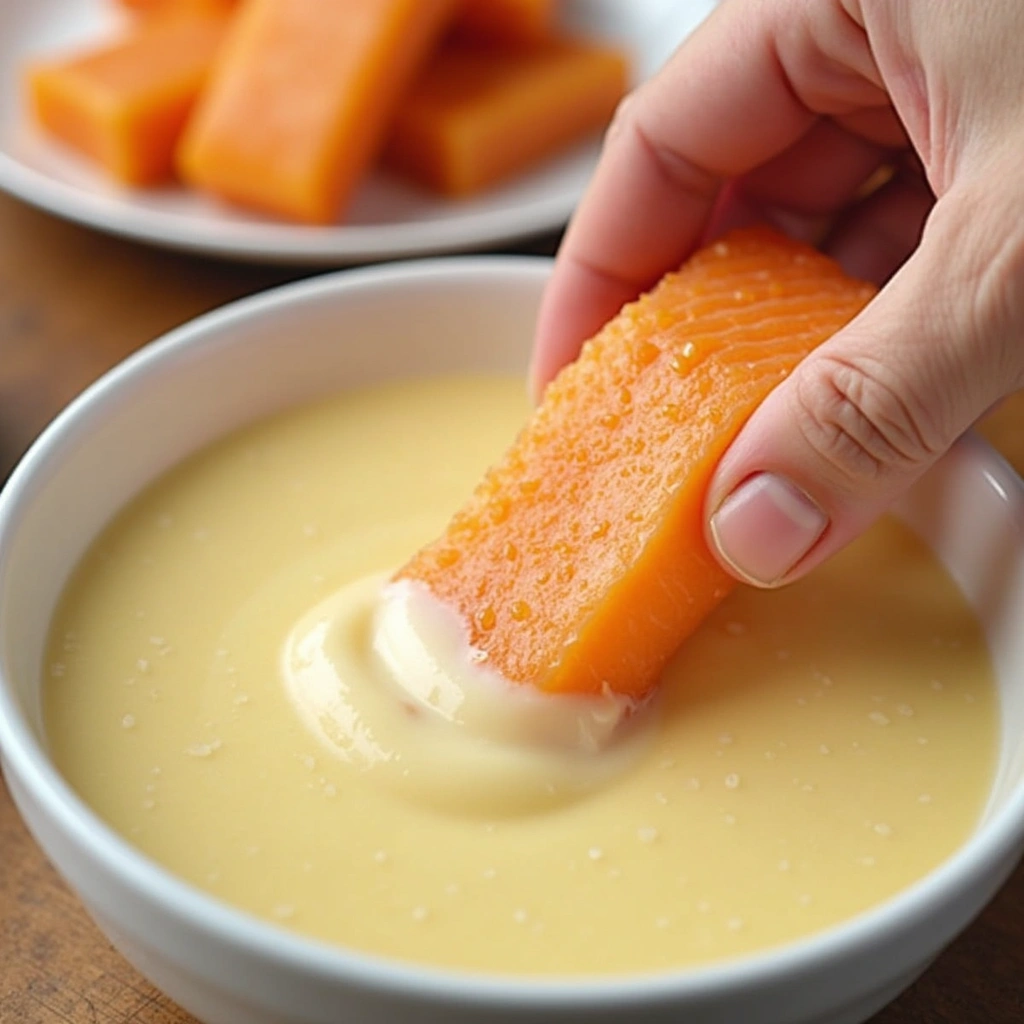
Dip each fish fillet into the batter, ensuring it is well-coated on all sides.
Allow excess batter to drip off before placing it in the hot oil.
This will help achieve a lighter, crisper coating.
Work quickly to keep the oil temperature consistent.
Step 5: Fry the Fish
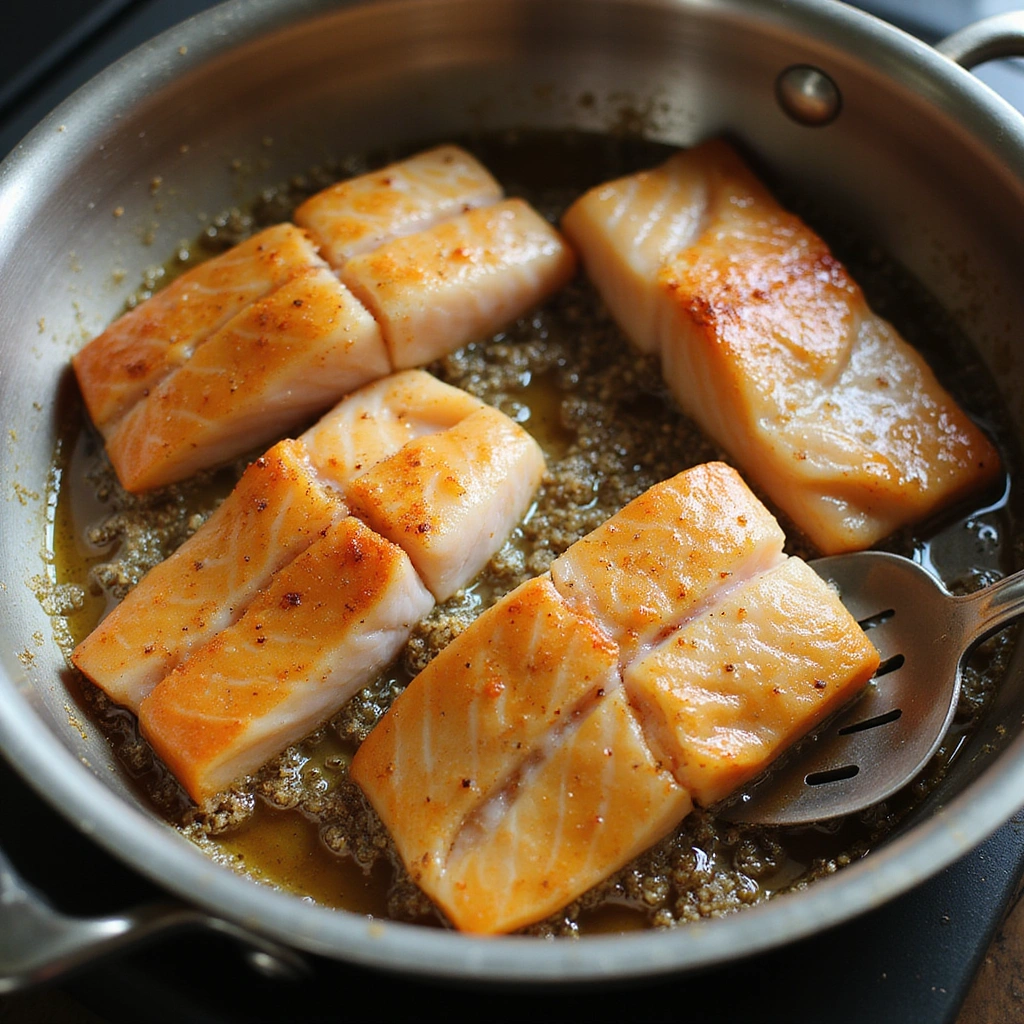
Carefully place the coated fish into the hot oil, laying it away from you to avoid splashes.
Fry in batches, making sure not to overcrowd the pot.
Cook for about 3-4 minutes on each side until golden brown and crispy.
Use a slotted spatula to flip the fish gently halfway through cooking.
Step 6: Drain the Fish
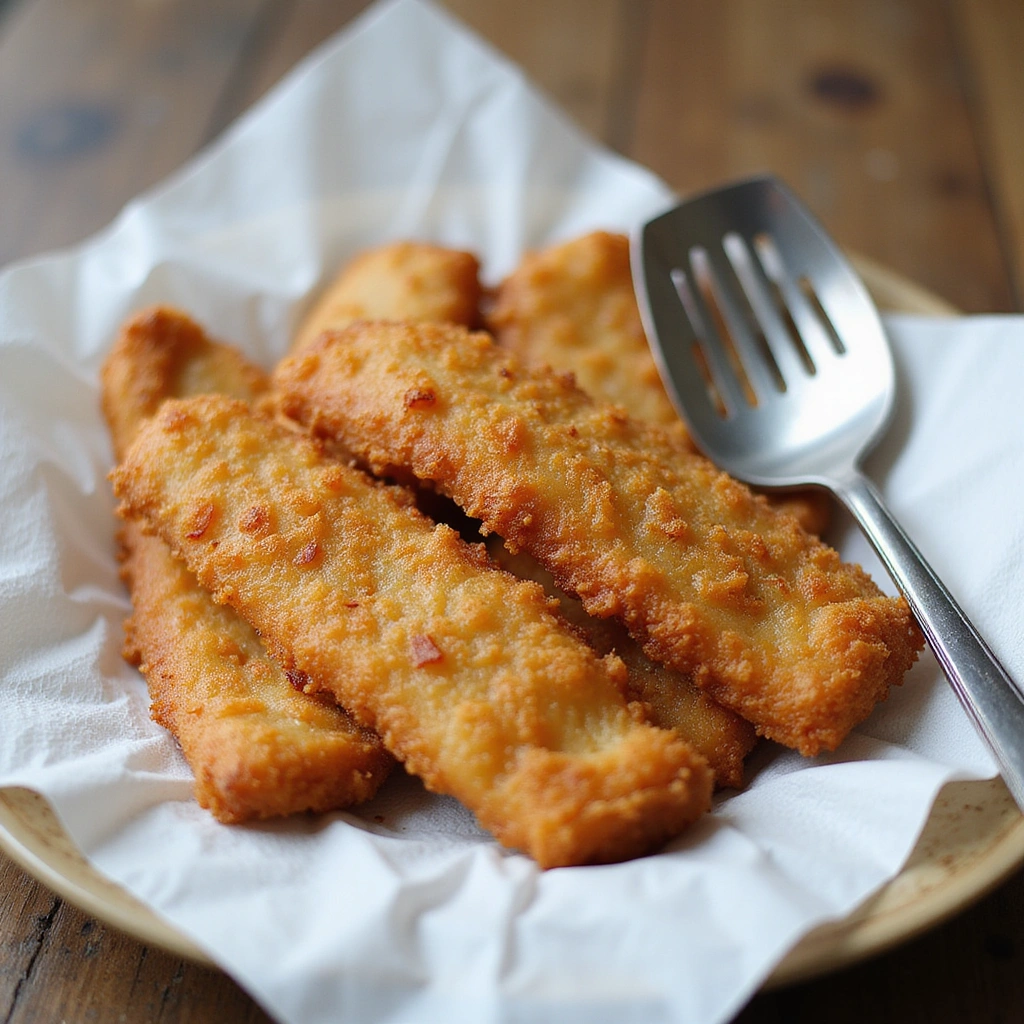
Once cooked, carefully remove the fish from the oil using a slotted spatula.
Transfer the fried fish to a plate lined with paper towels to absorb excess oil.
Let it rest for a minute to maintain the crispiness.
Repeat the frying process with any remaining fish, ensuring the oil temperature remains consistent.
Step 7: Prepare the Dipping Sauce
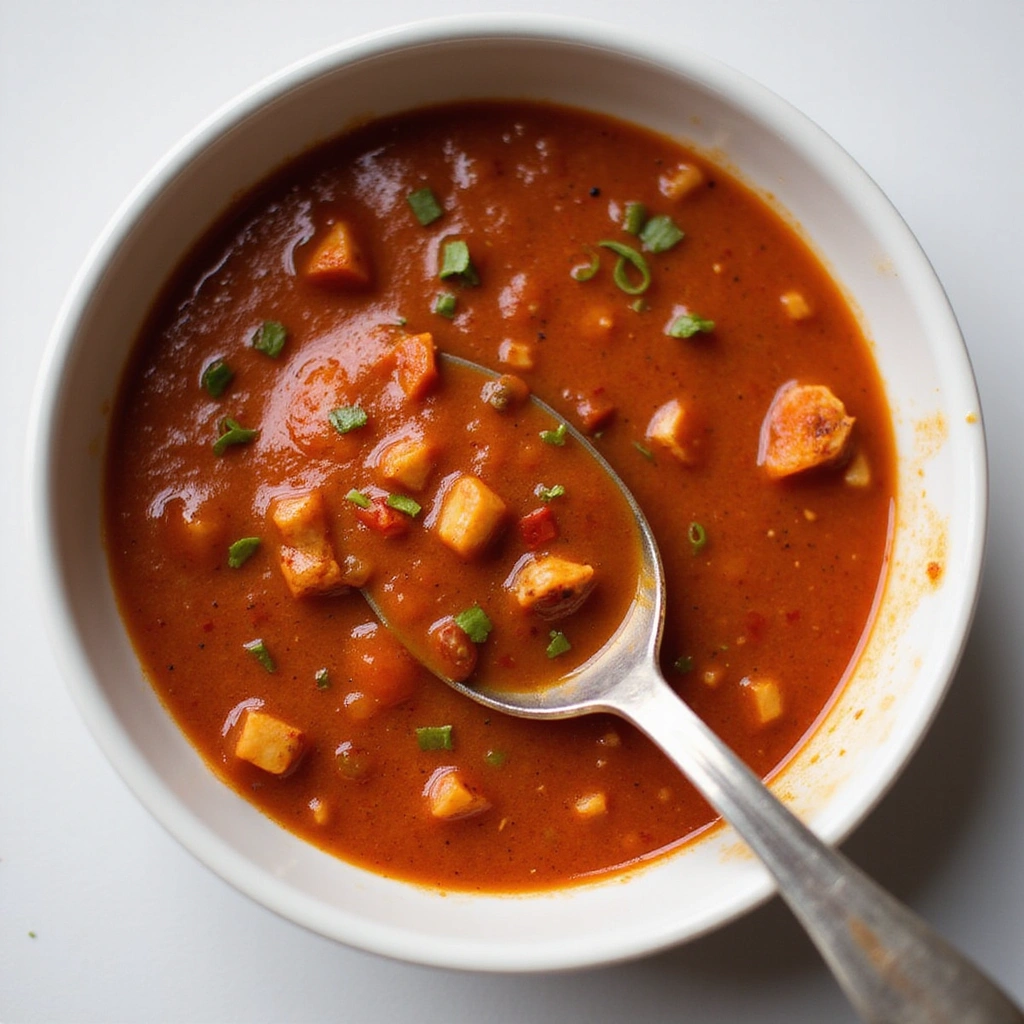
In a small bowl, combine fish sauce, lime juice, sugar, minced garlic, and sliced chili.
Stir well until the sugar dissolves completely, creating a balanced sauce.
Adjust the seasoning according to taste, adding more lime or sugar as desired.
Let it sit for a few minutes for the flavors to meld.
Step 8: Serve the Dish
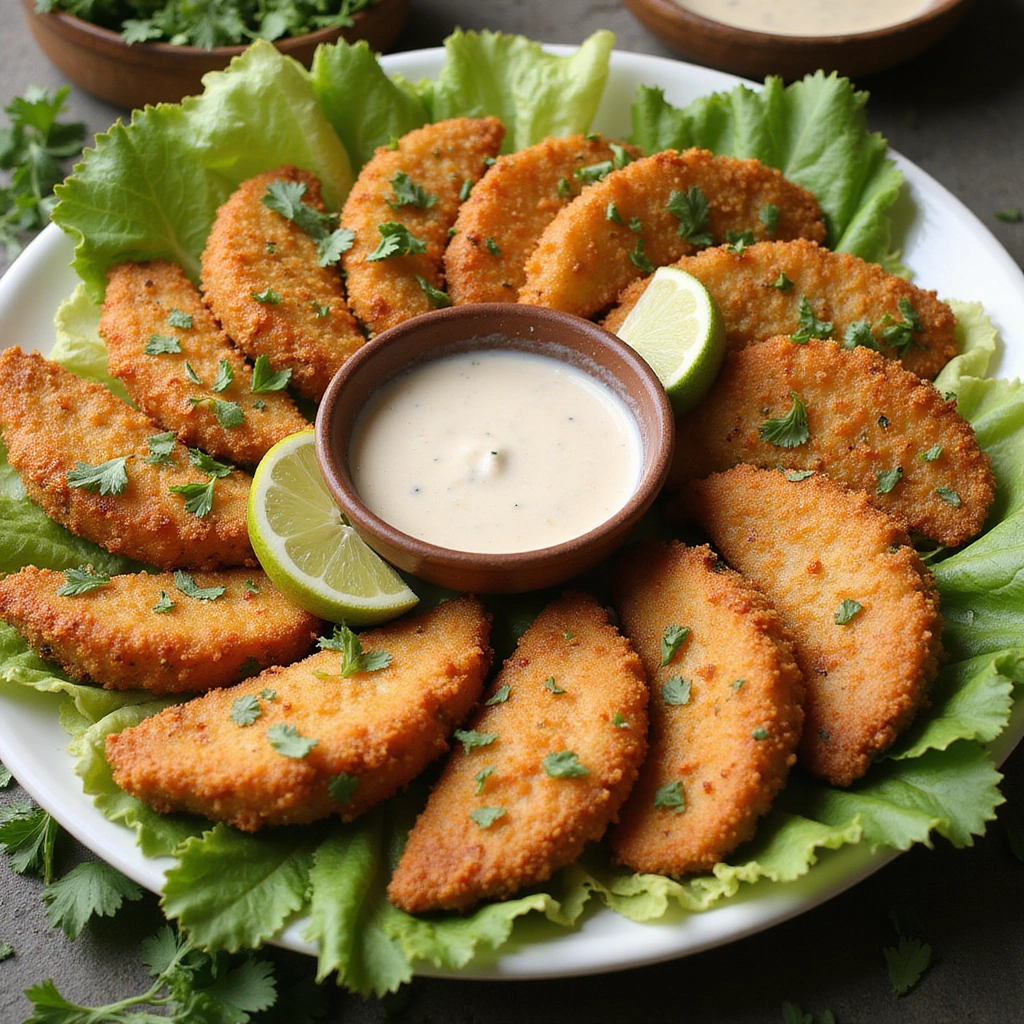
On a serving platter, arrange the fried fish alongside fresh lettuce and herbs.
Serve with the dipping sauce in a small bowl for easy access.
Garnish with lime wedges for an added zesty touch.
Enjoy your crispy Vietnamese fried fish while it’s hot for the best texture.
Critical Timing and Temperature Guide
Frying Fish: Aim for 3-4 minutes on each side at 350°F for perfect crispiness. Visual indicators include a golden-brown color and a bubbly texture. Avoid cooking too long to prevent dryness and toughness.
Resting Time: Allow fried fish to rest for 1-2 minutes on paper towels to absorb excess oil. This ensures a crispy texture without greasiness. Avoid resting for too long to prevent sogginess.
Dipping Sauce Preparation: Allow the sauce to sit for at least 5 minutes after mixing to enhance flavors. Visual indicators include a homogenous mixture and balanced taste. Adjust lime or sugar if the flavor is off.
Pro Tips for Crispy Vietnamese Fried Fish
• Ingredient Selection: Choosing the freshest fish possible makes a significant difference in flavor. Look for firm, clear-eyed fish at your local market.
• Preparation Secret: Allowing the batter to rest enhances its lightness and crispness when fried, creating a better texture.
• Temperature Management: Maintaining a consistent oil temperature is crucial to avoid greasy fish. Use a thermometer to monitor heat closely during frying.
• Texture Enhancement: For an extra crispy texture, double coat the fish by dipping it in the batter a second time before frying.
• Flavor Layering: Consider adding a splash of coconut milk to the batter for added richness and flavor complexity.
• Make-Ahead Strategies: Prepare the dipping sauce a day in advance and store it in the refrigerator for the flavors to deepen.
• Restaurant-Quality Finishing Touches: Garnish the fish with fried shallots or a sprinkle of sesame seeds for an elegant presentation.
• Equipment Optimization: If using a pot instead of a fryer, use a deep, heavy-bottomed pot to better regulate heat and prevent oil splatter.
Troubleshooting Common Issues
• Fish Not Crispy: This could be due to insufficient oil temperature or too much batter. Ensure the oil is at least 350°F, and let excess batter drip off before frying.
• Fish Breaking Apart: Overcrowding the frying pan can cause the fish to break apart. Fry in smaller batches to avoid this issue.
• Oily Texture: If the fish is greasy, it likely did not fry long enough. Ensure it turns golden brown and rests on paper towels.
• Flavor Too Strong or Weak: The dipping sauce can be adjusted by adding more lime juice for acidity or sugar for sweetness. Taste before serving to balance flavors.
• Batter Not Sticking: This may happen if the fish is too wet. Pat the fish dry before battering to ensure a good coating.
• Uneven Cooking: If the fish cooks unevenly, check the oil temperature and ensure the fish pieces are similar in size.
Variations and Regional Differences
• Southern Vietnam Style: In the south, the fish is often marinated with turmeric and garlic before frying, giving it a vibrant yellow color and additional flavor.
• Central Vietnam Style: In Central Vietnam, the fish is sometimes served with a side of pickled vegetables, adding a tangy contrast to the rich fish.
• Northern Vietnam Style: Northern versions may include a light coating of cornstarch for a different texture and are often accompanied by a spicy dipping sauce.
• Modern Interpretations: Health-conscious adaptations may use almond flour or whole wheat flour for the batter, catering to gluten-free diets while keeping the dish’s essence.
Food Science Behind the Recipe
• Maillard Reaction: This chemical reaction occurs when proteins and sugars in the fish and batter are heated, resulting in the desirable golden-brown crust. Understanding this helps achieve the perfect frying temperature for optimal browning.
• Emulsification: The combination of water and rice flour creates a batter that coats the fish, providing a barrier that prevents moisture loss during frying. Mastering this technique leads to a crunchier texture.
• Thermal Conductivity: The type of oil used can affect frying results. Oils with high smoke points (like canola or peanut oil) maintain consistent temperatures better, leading to more evenly cooked fish.
Frequently Asked Questions
What’s the most common mistake people make when preparing Crispy Vietnamese Fried Fish? The most common mistake is not drying the fish properly before coating it. This can prevent the batter from adhering well, leading to less crispy results.
Can I prepare components of this dish in advance? Yes, you can prepare the dipping sauce up to a day ahead and store it in the refrigerator. However, it’s best to fry the fish just before serving for optimal crispiness.
How do I adapt this recipe for dietary restrictions? For gluten-free options, substitute the rice flour with a gluten-free all-purpose blend or almond flour. Adjust the quantity as needed for consistency.
What’s the best way to store and reheat leftovers? Store leftovers in an airtight container in the refrigerator for up to 2 days. Reheat in an oven at 350°F for about 10 minutes to regain crispiness.
Can I freeze this dish? Yes, freeze the cooked fish in a single layer. When ready to eat, thaw in the refrigerator and reheat in the oven for best texture.
What wine or beverages pair best with this dish? A crisp white wine like Sauvignon Blanc or a light lager pairs nicely, as their acidity complements the fish’s flavor.
How can I scale this recipe up for a crowd? Simply multiply the ingredients by the number of servings needed, but remember to fry in batches to maintain oil temperature and quality.
What side dishes complement this recipe best? Fresh spring rolls or a light cucumber salad work wonderfully alongside the fish, enhancing the meal’s freshness.
How do professional chefs elevate this dish for restaurant service? Professional chefs often use high-quality fish and add unique garnishes like fresh herbs or edible flowers to enhance the dish’s presentation and flavor.
Serving and Presentation Guide
• Traditional Presentation: Serve the fish on a large platter garnished with fresh herbs, lime wedges, and the dipping sauce in the center. This communal style encourages sharing and adds to the dining experience.
• Modern Plating Ideas: For a contemporary touch, plate individual servings with a small mound of shredded lettuce and a drizzle of sauce over the fish, creating a visually appealing presentation.
• Accompaniment Suggestions: Pair the dish with jasmine rice or a light vermicelli noodle salad for a well-rounded meal. Consider adding pickled vegetables for extra flavor.
• Special Occasion Presentation: For celebrations, consider arranging the fish on a decorative platter with colorful garnishes like edible flowers and microgreens, elevating its visual appeal.
Conclusion
Crispy Vietnamese Fried Fish is a dish that perfectly encapsulates the vibrancy and freshness of Vietnamese cuisine.
With its simple preparation and bold flavors, it’s a perfect addition to any dinner table.
I encourage you to try making this dish at home; the experience is as rewarding as the meal itself.
